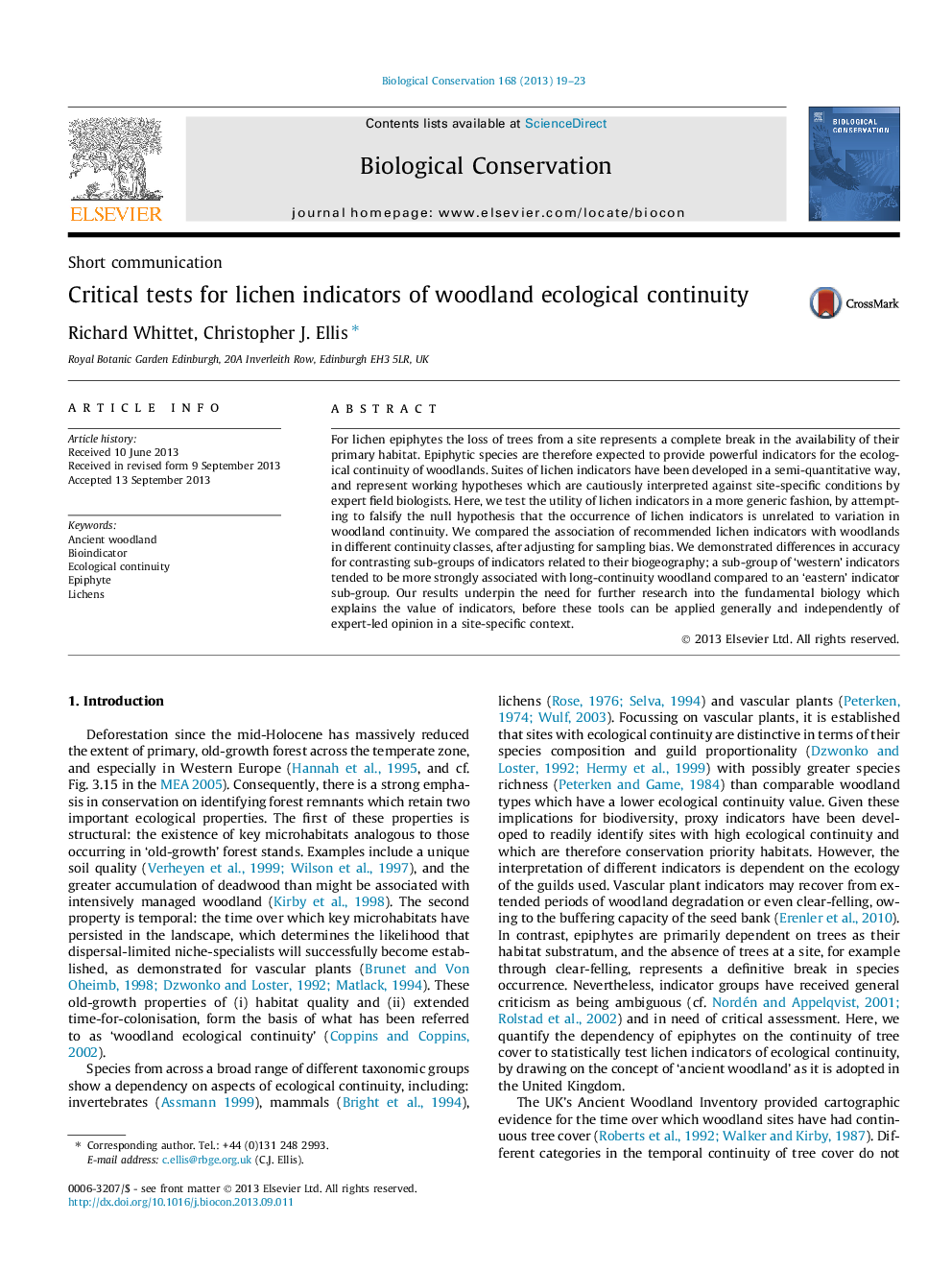| Article ID | Journal | Published Year | Pages | File Type |
|---|---|---|---|---|
| 6300365 | Biological Conservation | 2013 | 5 Pages |
Abstract
For lichen epiphytes the loss of trees from a site represents a complete break in the availability of their primary habitat. Epiphytic species are therefore expected to provide powerful indicators for the ecological continuity of woodlands. Suites of lichen indicators have been developed in a semi-quantitative way, and represent working hypotheses which are cautiously interpreted against site-specific conditions by expert field biologists. Here, we test the utility of lichen indicators in a more generic fashion, by attempting to falsify the null hypothesis that the occurrence of lichen indicators is unrelated to variation in woodland continuity. We compared the association of recommended lichen indicators with woodlands in different continuity classes, after adjusting for sampling bias. We demonstrated differences in accuracy for contrasting sub-groups of indicators related to their biogeography; a sub-group of 'western' indicators tended to be more strongly associated with long-continuity woodland compared to an 'eastern' indicator sub-group. Our results underpin the need for further research into the fundamental biology which explains the value of indicators, before these tools can be applied generally and independently of expert-led opinion in a site-specific context.
Related Topics
Life Sciences
Agricultural and Biological Sciences
Ecology, Evolution, Behavior and Systematics
Authors
Richard Whittet, Christopher J. Ellis,
